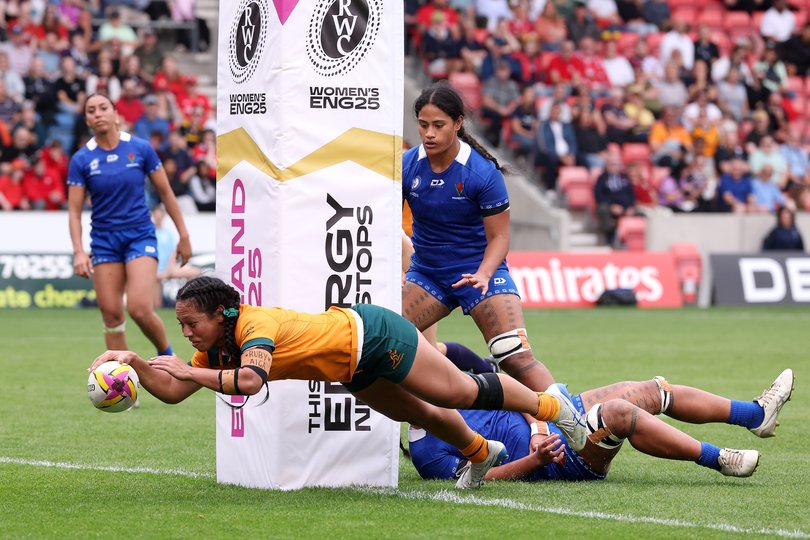KIERSTEN DUKE: Flashing mouthguards at Women’s Rugby World Cup should be used in the NRL
When the Women’s Rugby World Cup kicked off on the weekend, fans were expecting the usual thrills, power and skills the code guarantees to deliver but in addition to that were served up something rather novel: flashing mouthguards.
Designed to keep athletes safe, the smart mouthguards measure impact to the head, flashing when a player experiences an intense collision with enough potential to cause a concussion.
Used in the men’s 2023 Rugby World Cup, these mouthguards are more advanced on what was in use two years ago.
Sign up to The Nightly's newsletters.
Get the first look at the digital newspaper, curated daily stories and breaking headlines delivered to your inbox.
By continuing you agree to our Terms and Privacy Policy.The mouthguard contains smart technology which measures collisions. If the impact registers high enough, the mouthguard flashes red alerting players and officials. During play an independent doctor will then assess the player for concussion signs and decide on whether they are allowed to continue to compete or not.
It’s not just intensity of impact that the mouthguard can measure. It also clocks direction of force and the number of collisions for any player during a game.
The mouthguard can be linked to an app on a smart phone for data analysis. This can be done throughout the game, but like any new technology there are teething issues.
That small issue comes in the form of a slight delay in data being transferred from the mouthguard to the phone.
The positive impact these mouthguards have on a players’ health is second to none. It won’t be long before the product is put to use in other top flight sports.
In time it’s likely we’ll see them become more common and cost effective in non-professional and youth grades too.
Currently these state-of-the-art mouthguards retail for around $300, roughly $100 more than a dentist fitted custom piece. Too costly for the average grass roots junior team but for the NRL it’s peanuts.

Introducing this technology to rugby league could be game changing. The personalised data could help officials assess and treat head trauma faster and more accurately. Therefore resulting in less time out for players.
Manly prop Jake Trbojevic is sitting out for the rest of the season after suffering three concussions throughout 2025.
While Trbojevic has allowed himself time to recover and accepts that the club is prioritising his health, the 31-year-old is adamant he will be back in action for the Sea Eagles’ 2026 preseason.
Jurbo has been open in admitting that the sensitivity of the topic is far from ideal. The diagnosis of a concussion can be quite indirect and therefore recovery time and treatment can vary.
With the valuable information the mouthpiece could provide Trbojevic could receive more personalised treatment and less time on the sideline by wearing one.
Head injuries are no joke. We all know this. It’s time to tackle concussions head on.
